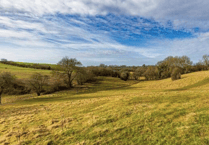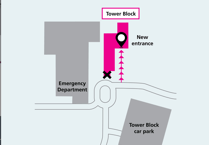AN investigation that will help determine the future of Cannop Ponds is set to start on Monday (July 3).
Forestry England says the work will help them understand the geological make-up of Upper and Lower Cannop dams, and the immediate surrounding area.
Core samples will be through the dam wall and down to the bedrock.
The bore holes will be approximately six inches wide, and will be filled in afterwards so as not to affect the integrity of the existing dams.
These tests will reveal what kind of ground is underneath the dams, and where the original ground level would have been.
The tests will also show exactly what materials were used to construct the dams and will provide more evidence on their current condition.
Those works were due to begin in June but were delayed.
Other works to maintain the ponds in the short term have been completed in the last few weeks, with the water levels of the upper pond having been lowered using pumps so that the spillway could be inspected and its masonry repointed.
FE says this was not part of the ongoing situation concerning the long term future of the ponds.
Next week's investigation is being carried out by Gloucester-based Geotechnical Engineering Ltd and will involve the use of a small drilling rig.
Alongside this work, silt samples will be collected from the reservoirs.
A floating pontoon will be used to look at the depth of the silt and what it is made of, including any possible contamination.
Forestry England says all options for the future of the ponds will require water levels to be lowered at some stage.
The results of this work will help determine what kinds of mitigation will be needed to prevent the spread of this silt and ensure any historical industrial pollution is not disturbed.
Kevin Stannard, Deputy Surveyor for Forestry England, said: “We know that drilling works at Cannop Ponds may be worrying for some people, but this work is essential for us to gain a better understanding of the dam structures.
“Our current knowledge is based on visual inspections and historic information.
“This work gives us the opportunity to test our assumptions and increase our knowledge.
“The engineers now need to move beyond assumptions and visual assessment of the historic dams, to work with firm data of what the dams are sitting on, what the dams are made of, as well as the depth and make-up of the silt layers in the Ponds themselves.
“This information will be vital to inform the decision as to which option is taken forward; and the final design of that option.”
“The ground investigation work will take approximately two weeks and disruption to visitors will be kept to a minimum.
“The car park will be kept open, although there will be a short, temporary road closure whilst the drilling rig is brought onto, and taken away from, the site.
“There will also be temporary closures to the public rights of way that cross the ponds.
“As the materials will be sent off to be tested in a laboratory, results are not expected for a few months.”
The four options for the future of Cannop Ponds can be viewed here.





Comments
This article has no comments yet. Be the first to leave a comment.